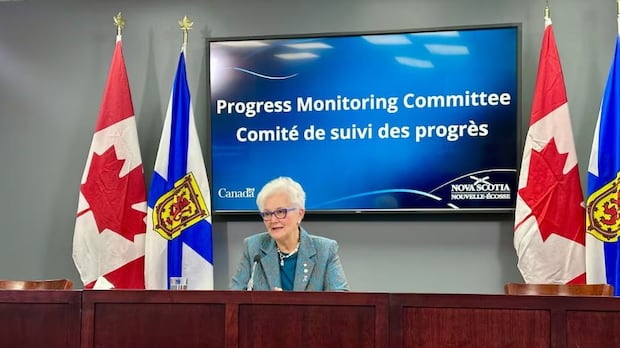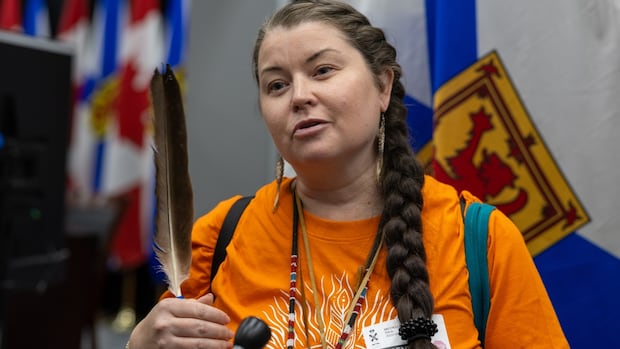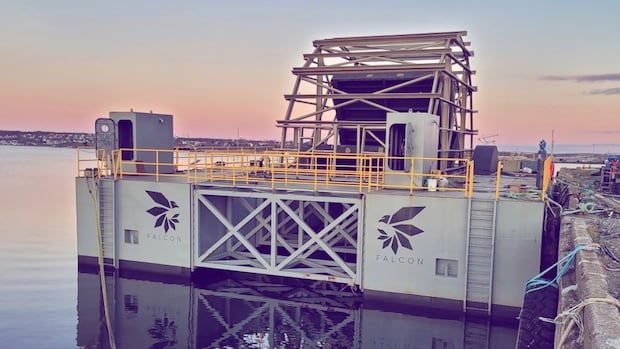Union, chiefs worry dispute among CBRM firefighters could affect responses, volunteers

A union leader fears a dispute among full-time firefighters in Cape Breton Regional Municipality could potentially affect the response to calls for rope rescues at tall apartment buildings or construction cranes in Sydney, N.S.
CBRM’s volunteer fire chiefs say they are also concerned the union’s internal dispute could cause members to quit or others to decide against volunteering.
The chiefs’ association issued a news release on the weekend, saying they had been told the union was handing out fines to its members who are volunteers in their home community.
Donnie Whalen, president of the International Fire Fighters Association (IAFF) local 2779, which represents firefighters in Sydney, said the volunteer chiefs did not have the full story.
“I can tell you there’s inaccuracies in the letter,” he said. “No member has been fined. What’s happened is somebody got pushed too far and has laid charges with our international office in Washington.”
Dispute involves rope rescue calls
Whalen said the dispute arose because career firefighters in Sydney have not been given the training or equipment to respond to high-angle rope rescue calls, but some volunteer departments outside Sydney have.
That could be a problem if a call came for a rescue at the top of one of the tall apartment buildings in Sydney or construction cranes at the regional hospital.
Whalen said the responders could be a mix of volunteer and unionized firefighters — and that’s become a problem for one union member, who has gone to head office with a complaint against other union members who are also volunteering in their home community.
The union wouldn’t discuss the details of that complaint. Whalen said the union’s bylaws prohibit members from volunteering, but the local has never enforced that provision.
Whalen said the local’s concern is that some union members, in a volunteer capacity, are taking work in Sydney away from career firefighters.
“The holdup is we have union members that are on this team and will come in,” said Whalen. “At the same time, our own guys can’t get the equipment to do it.”
But there’s nothing the union local can do to resolve the dispute, because the policy goes back decades and it’s being handled at the top levels, Whalen said.
Tim Burn, press secretary for the IAFF in Washington, DC, said in an email that union policy prohibits members from volunteering in areas represented by union locals “because it is unsafe and negatively impacts the livelihood of other members.”
He said while the union enforces its internal process, CBRM residents “can rest assured their firefighters will always respond swiftly, with experience and training, to any emergency.”
Whalen said the union local recently met with some of the volunteer chiefs and CBRM fire service management to come to an agreement on high-angle rope rescues in Sydney.
However, he said he’s not sure what the status of that agreement is.

Rod Beresford, chief of the volunteer department in Westmount and chair of the regional chiefs association, said the volunteer departments are willing to help out in Sydney, but the union’s internal dispute is cause for concern.
“We don’t have a dispute with the unionized firefighters or with the union itself,” he said. “The union has to conduct their business as they need to.
“There’s a situation now where some of these members may be finding themselves in a position where they feel like they might have to resign from a volunteer fire service or potentially face additional charges.”
CBRM’s deputy fire chief Chris March said with new buildings going up at the regional hospital, all parties have agreed that volunteers from four regional departments with high-angle rescue training and gear can respond in Sydney until the full-time service gets training and equipment — and that is coming within the next year.
“For the first time in 35 years we have cranes that require a response-capable department to be ready to go,” he said.
“Hopefully there’ll be more cranes to come, so it’s only prudent that we get that training. It’s only responsible.”

March, who has spent 27 years with the fire service, said the issue is new for him and others who’ve been with the department longer.
“None of us can remember a high-angle rescue call within the city limits in all those years, so they’re not abundant. It only takes one, but we do have a system in place to take care of that, if need be.
“I feel confident and I certainly think that our residents should be confident that we have a very committed and very well-trained and equipped fire department, right from Sydney on through to the 33 volunteer or composite departments that we have.”
Meanwhile, Whalen said it could be a couple of months before the union’s head office rules on the internal dispute.
Halifax’s career firefighters are in the same union as CBRM’s, but a different local.
Deputy chief David Meldrum said HRM allows employees to volunteer in regional departments and leaves it up to the union to handle disputes among its members.
MORE TOP STORIES




